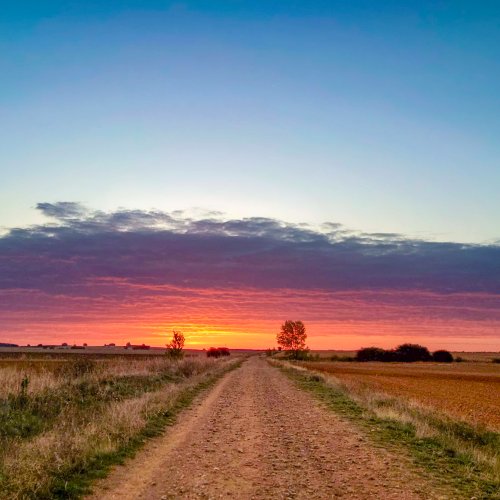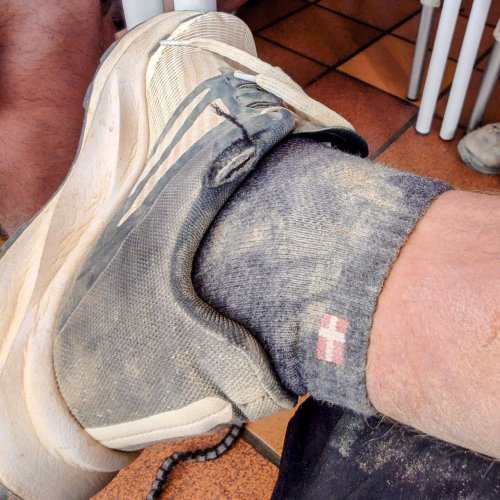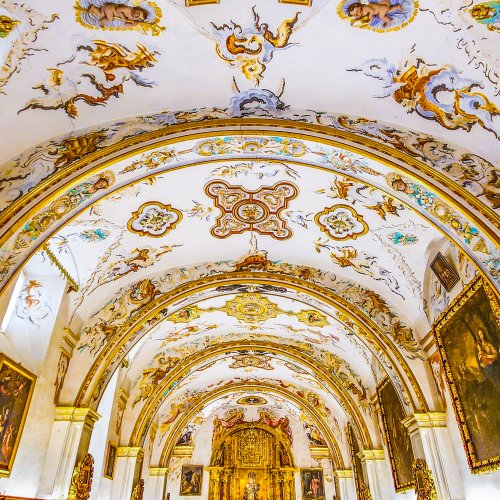I am walking the Portuguese Coastal Camino in mid May. Is it necessary to book the ferry crossing from Caminha to A Guarda in advance or just show up to ensure passage? It looks like Xacobeo Transfer is the only way to cross now. Is it often that low tide prevents crossing? Thanks.
Forgive me - the following is linked, if vaguely, to your question, apart from your specific context. It is an article I read yesterday in my Irish online subscription. I would love to take it up, but it is actually way outside my budget. It might entice others...
Flightless to Faro
It takes much longer and costs much more, but the experience of travelling by sea and land to Portugal was incomparable to flying
I’m in the city of Porto looking across at the cellars where the world’s port is aged in oak barrels buried into the bank of the Douro river. It’s the first day of my Portuguese holiday and yet – it being a flightless trip – it’s actually the fourth day of travel.
I spent two nights aboard Brittany Ferries’ new Salamanca ship from Rosslare to Bilbao, which enabled a crossing of the Bay of Biscay as calm as the English Channel, thanks to the ship’s size and the LNG-powered (liquid natural gas) engines, which seem steadier than diesel ones. (They also eliminate the disconcertingly black smoke that belches from some ferries, though LNG is still a fossil fuel.)
Highlights so far have been a day in the Guggenheim Museum in Bilbao and a spectacular train journey from Madrid to the Spanish coastal city of Vigo along the churning Minho river through Galicia. But only now is my holiday truly beginning as I set off southwards from Porto, through the entire length of Portugal to the Algarve. It’s the third flightless winter sun holiday of my life, having travelled to Seville and Brittany in the past two Januarys.
Porto provided an ideal introduction to the fine neoclassical and medieval architecture that I would be surrounded by for the next fortnight. Its elaborate cathedral and bishop’s palace crown the city, leading to a knotwork of medieval laneways that wind up and down between the river bank and the surrounding hills. In every direction are convents, monasteries and churches, ostentatiously decorated with the profits of Brazilian gold and the taxation of the city’s thriving port and textile industries. The city is both spectacular and a sober reminder of the vast wealth amassed by the ruling and religious elite on the Iberian Peninsula, much of it on the back of slavery and exploitation.
My walking tour led by Pedro Figueiredo, a “recovering architect” who runs The Worst Tour company, made this abundantly clear. He led us through the warren-like network of “islas” – hidden working-class homes built in the gardens of bourgeois houses from the 19th century to the 1940s, and emphasised how rare it is for tourists in Europe to ever be led away from the monumental trappings of the ruling elite.
Wanting to get a better sense of the Douro river valley that provided so much of the wealth of Porto, I took a local train eastbound along the river, past vines that have been used for port-making for centuries. In all directions, terraced vineyards rise from the water, with whitewashed farmhouses that continue a custom of wine-making begun by Roman soldiers here 2,000 years ago. The longevity of tradition has been recognised by Unesco, who designated the region a World Heritage Site. I spent an afternoon walking along trails up above the snaking green river, past old vines whose roots extend more than 20 metres down into the shaley soil.
If you have the time, it’s worth heading further upriver by train or a sail boat. The stretch from Pinhão to Pocinho is spectacularly clad in vineyards. The further east you head the wilder it gets, until eventually you’re in the region of Trás-os-Montes, approaching the Spanish border where Mirandese is spoken, a language closer to Latin than modern Portuguese or Spanish. Practises survive here that seem rooted in paganism, such as the stick dances, sun festivals and complex fancy-dress rituals.
I headed on south in search of sun and soon reached another bewilderingly intact medieval city, Coimbra, that once again reminds one of the phenomenal wealth amassed by the nobility and clergy. This steeply, stacked city above the meandering Rio Mondego was the capital of Portugal in the 12th and 13th centuries, and in every direction in the old district are elegant mansions and ornate churches and monasteries clinging to the slopes. Many are now occupied by Universidade de Coimbra, the country’s most prestigious educational institution, that has been luring writers, artists, intellectuals and scientists since its foundation in the 16th century. It’s still the city’s animating force, with students visible everywhere on the steep cobbled lanes, occasionally dressed in traditional black capes adopted so less privileged, rural students wouldn’t feel underdressed. Nowadays, the capes are mostly worn for cultural and ceremonial occasions, but their significance is evident from the little rips, tears and patches sewn on them as symbols.
Coimbra has a unique form of Fado that was sung by students and faculty as a way of serenading women. You might hear live renditions on the streets; former students, dressed in their capes, offer nightly renditions for tourists. I spent a day entranced by the area’s museums and sumptuous old library, until the migratory instinct to head towards warmth kicked in again and I jumped on another train.
The prime purpose of these January flightless holidays is to escape the grey chill of Irish winters; from the moment I landed in Bilbao I’d been bathed in blue skies and temperatures of about 14 degrees. It’s not hot, but it’s also not crowded, and everything is far cheaper than in high season.
When I entered the hilly dry lands of the Alentejo region, south of Lisbon, the climate was noticeably drier. The train rolled through an endless swathe of cork forest, vineyards, fruit groves, farmland and arid hills to Alto Alentejo, the central highlands, where shepherds still roam and black pigs scour woodlands seeking acorns. This is the heartland, with poorer soils but strong tradition. The food here is more rustic and all the better for it: rich stews, foraged mushrooms, wild game and simple sheep cheeses. As a base, I chose yet another medieval town, Évora, with winding cobbled streets, elegant cut-stone buildings and beautiful plazas. It’s worth staying in one of the old buildings to get a feel for the grace and comfort in which estate owners and minor nobles used to live.
I was keen to visit a local vineyard, Tapada de Coelheiros, that was converting to biodynamic practises, while rewilding much of its estate, reintroducing natural irrigation systems and training its shepherds in old grazing practises to aid land regeneration, but it was 25km from town and I didn’t want the expense of a taxi. Fortunately, the town has an e-bike rental company and so I was able to head out for a tour and tasting as well as a visit to the nearby carpet-weaving town of Arraiolos, where I saw locals hand-stitching rugs in their porches as I cycled by and heard the traditional choral singing Cante Alentejano in the neighbouring village of Igrejinha. This singing style dates back hundreds of years, possibly to Moorish times.
The vineyard was inspiring, with wonderful wines and pioneering ecological practises. The round-trip came to 75km, which was surprisingly manageable since the motor did all the work. It made it clear how trains and e-bikes are an ideal combination for exploring Europe in an affordable, sustainable manner. Alentejo made a deep impression on me with its strength of local customs and delicious artisanal fare, and I’m keen to return to follow one of its well-established walking or cycling routes, which have great guesthouses and restaurants a day’s walk apart. But I was aware that I’d soon have to head back north towards the frigid Irish winter and wanted as much time as possible in the Algarve, so I got yet another train south, this time to Faro. This modern resort town has a flashy marina and nightclubs, and a charming old town with manors and monasteries.
I spent three nights there, swimming daily in the warmish waters and taking boat trips through the 60km of lagoons, marshes, salt pans and dunes that make up the Parque Natural de Ria Formosa. It’s a thriving ecological biosphere that surrounds a modern, sunseekers resort town. If I had time there would have been secret coves to explore all along the coastline east and west, but I had been away for 12 days and it would take me four days to get back to Ireland, so I jumped on a train to Porto, and from there via Vigo across a more mountainous route to Madrid and north to Bilbao.
The trip took significantly longer than if I had flown – and cost more – but it gave me an incomparable experience. I gained an invaluable overview of Portugal’s geography and regional characteristics. I came home feeling sun-enriched and deeply relaxed after so many meditative hours on trains and ships. I’d recommend it to anyone, but I do first need to acknowledge the cost. The ferry was €456 for three nights in a deluxe cabin with access to good “free” food in the premium lounge. The 10 trains through Spain and Portugal came to €370. That’s €826 in total, as opposed to €60 for a flight. The difference is indefensible. But it’s clear that in this carbon-choked world the cost of flights must rise to reflect their true impact on our ecosystem and the cost of ferries and trains must fall.
Manchán Magan was assisted by visitportugal.com
Manchán Magan
edit note: practise is a verb in British English, practice is a noun.











